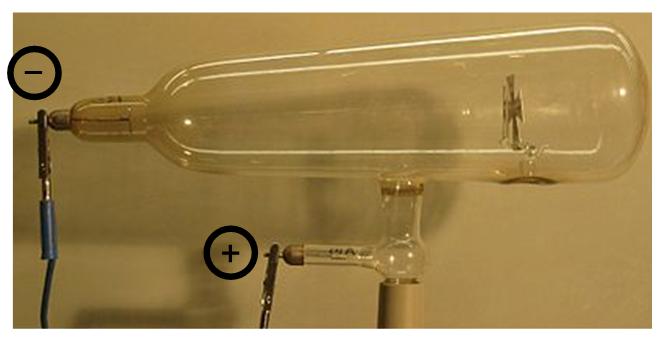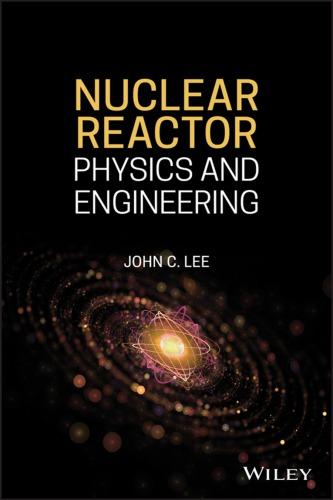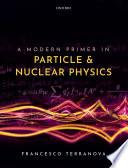Nuclear Physics 1
Nuclear Deexcitations, Spontaneous Nuclear Reactions
Ibrahima Sakho
First published 2021 in Great Britain and the United States by ISTE Ltd and John Wiley & Sons, Inc.
Apart from any fair dealing for the purposes of research or private study, or criticism or review, as permitted under the Copyright, Designs and Patents Act 1988, this publication may only be reproduced, stored or transmitted, in any form or by any means, with the prior permission in writing of the publishers, or in the case of reprographic reproduction in accordance with the terms and licenses issued by the CLA. Enquiries concerning reproduction outside these terms should be sent to the publishers at the undermentioned address:
ISTE Ltd
John Wiley & Sons, Inc.
27-37 St George’s Road 111 River Street London SW19 4EU Hoboken, NJ 07030
UK USA
www.iste.co.uk
www.wiley.com
© ISTE Ltd 2021
The rights of Ibrahima Sakho to be identified as the author of this work have been asserted by him in accordance with the Copyright, Designs and Patents Act 1988.
Library of Congress Control Number: 2021945496
British Library Cataloguing-in-Publication Data
A CIP record for this book is available from the British Library ISBN 978-1-78630-641-8
1.6.
1.6.3.
1.7.
1.8.
Chapter 2. Nuclear Deexcitations
2.1.
2.1.1.
2.1.5.
2.2.
2.2.1.
2.2.2.
2.3.
2.3.1.
2.3.2.
2.3.3.
2.3.4.
2.4.1.
2.4.2.
2.4.3.
2.5.
2.5.1.
2.5.3.
2.5.4.
2.6. Bethe–Weizsäcker semi-empirical mass
2.6.1.
2.6.2. Bethe–Weizsäcker formula,
2.6.3. Volume energy,
2.6.4. Coulomb energy.................................
2.6.5. Asymmetry energy, pairing
2.6.6. Principle of semi-empirical evaluation of coefficients in Bethe–Weizsäcker form
2.6.7. Isobar binding energy, the
2.7. Mass parabola equation for odd
2.7.2. Determining the nuclear charge of the most stable isobar from the decay energy
2.7.3. Mass parabola equation for even
2.8. Nuclear potential
2.8.1. Definition, model of the rectangular potential well
2.8.2. Modifying the model of the rectangular potential
2.9.
2.10.
Chapter 3. Alpha Radioactivity
3.1. Experimental
3.1.1. Becquerel’s observations, radioactivity
3.1.2. Discovery of α radioactivity and β radioactivity
3.1.3. Discovery of the positron............................
3.1.4. Discovery of the neutrino, Cowan and Reines experiment
3.1.5.
3.2.
3.2.1.
3.2.2.
3.2.3.
3.2.4.
3.3.
3.3.1.
3.3.2.
3.3.3.
3.3.4.
3.3.5.
3.3.6.
3.3.7. Estimating the
3.4.
3.5.
Chapter 4. Beta Radioactivity,
4.1.
4.1.1. Experiment of Frédéric and Irène Joliot-Curie:
4.1.2. Balanced equation, βdecay
4.1.3.
4.1.4. Sargent diagram, βtransition
4.1.5. Decay
4.1.6. Condition of β+ emission
4.1.7. Decay by electron capture
4.1.8. Double βdecay, branching ratio
4.1.9. Atomic deexcitation, Auger effect
4.2. Radioactive family
4.2.1.
4.2.2. Simple two-body family tree
4.2.3. Multi-body family tree, Bateman equations
4.2.4. Secular
4.3. Radionuclide production by
4.3.1. General aspects
4.3.2. Production rate of a radionuclide
4.3.3. Production yield of a radionuclide
4.4. Natural
4.4.1.
4.4.2. Thorium (4n) family
4.4.3. Neptunium (4n + 1)
4.4.4. Uranium-235 (4n +2) family
4.4.5. Uranium-238 (4n + 3) family
4.5.
4.6.
Preface
Nuclear physics is devoted to the study of the properties of atomic nuclei. These properties relate to the internal structure of the nucleus which facilitate the understanding of the properties of nucleons (neutrons and protons), the mechanisms of nuclear reactions (spontaneous or induced), in order to describe the different processes of elastic and inelastic nucleus-nucleus interactions, the fields of application of nuclear physics and, finally, the impact of nuclear radiation on human health and the environment.
In general, nuclear physics is the physics of low energies, ranging from 250 eV to 10 GeV [SAO 04, GER 07, LAL 11]. The range of energies above 10 GeV [SAO 04, GER 07, LAL 11] relate to the physics of high energies whose purpose is to study the constituent particles of matter and the fundamental interactions between them. In this field, experimenters use particle accelerators that operate at very high energies or deliver very large beam intensities, thus allowing access to the fundamental laws of subatomic physics at very short distances. The most spectacular achievement to date is of course the Large Hadron Collider (LHC), launched in September 2008 at CERN.
Nuclear physics is an area that has experienced considerable growth since the discovery of radioactivity in 1896 by Henri Becquerel [HAL 11], well before the discovery of the atomic nucleus in 1911 by Ernest Rutherford [RUT 11]. Research in nuclear physics covers several topics ranging from subatomic particles to stars. It thus constitutes a fundamental component of physics, allowing the exploration of the infinitely large and the infinitely small [ARN 10]. In addition, nuclear physics makes it possible to understand many astrophysical phenomena such as nucleosynthesis processes (primordial, stellar and explosive) within the framework of the Big Bang model. The study of these processes allows us to understand the origin of chemical elements and to describe the evolution of supernova and neutron stars [SUR 98].
This book is the fruit of a 25-year long teaching career. Initially this was teaching final-year high-school S1 and S2 science students at Alpha Molo Baldé High School in Kolda, from 1996 to 2002. It was then at Bambey High School from 2002 to 2008 and at Maurice Delafosse Technical High School from 2008 to 2010. This was followed by 9 years at Assane Seck University, Ziguinchor, teaching final-year Physics undergraduates and, since February 2019, teaching final-year Physics and Chemistry undergraduates at the University of Thiès.
Nuclear Physics 1 consists of four chapters, as follows.
Chapter 1 is reserved for general information regarding the atomic nucleus with a view to establishing the general properties of nuclei. It begins with a presentation of the experimental facts that led to the discovery of the electron (β particle), the proton, the neutron and the nucleus itself. It then focuses on the study of the composition and dimensions of the nucleus. Next, the nomenclature of nuclides and the stability of nuclei are studied. The chapter culminates with a series of exercises with answers.
Chapter 2 is dedicated to the study of nuclear deexcitation processes. The nuclear shell model, which offers an understanding of the discrete structure of nuclear levels, is studied in detail. Subsequently, the study examines the properties of angular momentum and parity, the processes of gamma deexcitation and internal conversion and the phenomenon of deexcitation by nuclear emission. A detailed study of the Bethe–Weizsäcker semi-empirical mass formula via the liquid-drop model and of the mass parabola equation for odd A completes the chapter and is followed by a series of exercises complete with answers.
Chapter 3 is devoted to the study of alpha (α) radioactivity. It begins with the experimental facts that led to the discovery of radioactivity itself, the discovery of α radioactivity and β radioactivity, the discovery of the positron (β + particle), neutrino and experiments highlighting α, β and γ radiation. The chapter goes on to focus on the study of radioactive disintegration and the properties of α decay A series of exercises complete with answers is at the end of the chapter.
Chapter 4 is reserved for the study of β and β + decay modes and for the study of radioactive family trees. At the beginning of the chapter, we present the experimental facts that led to the discovery of artificial radioactivity. We then focus the development on the study of the properties of β decay and the link between β decay and decay by electron capture. In addition, double β decay and the process of atomic deexcitation by Auger effect are studied in this chapter. The study subsequently focuses on the presentation of radioactive series, enabling the introduction of the Bateman equations. The mechanism for radionuclide production
by nuclear bombardment features prominently in the chapter, which is rounded off with a series of exercises complete with answers.
Two appendices follow the above chapters. The first appendix is dedicated to the determination of the quantified expression of the energy of the three-dimensional quantum harmonic oscillator, in relation to the harmonic potential nuclear shell model. Two approaches are adopted to achieve this. The first approach integrates the Schrödinger equation applied to a quantum harmonic oscillator. In the second approach, a more flexible operative approach is adopted using creation and annihilation operators. The second appendix provides a listing, in table form, of the atomic masses of isotopes of atomic numbers Z = 1–93.
This book is written for Physical Science teachers in high schools, for final-year Physics undergraduate students (Licence 3 under the French LMD system) and for university lecturers responsible for the Nuclear Physics module in their programs. It is written using clear and concise language, underpinned by a very original pedagogical style. Each chapter begins with an overview of the general objective, the specific objectives and the prerequisites for understanding the chapter as it unfolds. In addition, each concept or law introduced follows a direct application for sound understanding of the nuclear phenomena and properties studied. The chapters are interspersed with succinct biographies of all the great thinkers who have contributed to the development of nuclear physics in relation to the topics developed.
This book does not attempt to cover all aspects relating to understanding nuclear deexcitation processes and the properties of spontaneous nuclear reactions. Nevertheless, it contains the fundamental basics of nuclear physics relating to the topics studied here. As with all human endeavors, there is always room for improvement. We therefore remain open to our readers for any suggestions, comments or criticisms that could be used to improve the scientific quality of this work.
September 2021
Overview of the Nucleus
Overall objective
To know the general properties of nuclei
Specific objectives
To compare the atomic models of Thomson, Perrin and Rutherford
To compare Rutherford’s and Blackett’s observations on the first nuclear transmutation reaction
To know the properties of the isospin operator
To know the properties of the spin angular momentum of a nucleus
To know the fundamental properties of nucleons
To know the expression for the radius of a nucleus assumed to be spherical
To know the expression for the Sakho unit nuclear radius
To know the principle of a mass spectrograph
To compare the stability of nuclei from their nuclear binding energy
To know the effect of nuclear forces on the stability of nuclei
To define the effective scattering cross-section
To define the effective elementary scattering cross-section
To define the separation energy of a nucleon
To determine the separation energy of a neutron from a proton for a given nuclide
To determine the total isospin corresponding to the ground state of a nucleus
To deduce, from the binding energy, the nuclear charge of the most stable isobar
To establish the relationship between binding energy and mass defect
To establish the relationship between skin thickness and the diffusivity parameter
To write the balanced equation of the first nuclear transmutation reaction
To establish Rutherford’s differential effective cross-section
For a color version of all of the figures in this chapter, see www.iste.co.uk/sakho/nuclear1.zip.
Nuclear Physics 1: Nuclear Deexcitations, Spontaneous Nuclear Reactions First Edition. Ibrahima Sakho. © ISTE Ltd 2021. Published by ISTE Ltd and John Wiley & Sons, Inc.
To differentiate between u and d quarks according to the Gell-Mann and Zweig model
To differentiate between isospin and nuclear spin
To differentiate between unit nuclear radius and electromagnetic unit radius
To differentiate between isotopes, isobars and isotones
To differentiate between mirror nucleus and magic nucleus
To distinguish between valley of stability and line of stability
To define a monoisotopic element
To define a nuclear isomer
To define the nuclear dipole magnetic moment
To define the nuclear Landé factor
To define the skin thickness of a nucleus
To define the atomic mass unit
Material structure
Atomic models
Shell model of electron configurations
Quantum numbers of the electron
1.1. Discovery of the electron
To make the analogy between electron gyromagnetic ratio and nuclear gyromagnetic ratio
To make the analogy between Bohr magneton and Bohr nuclear magneton
To make the analogy between spin multiplicity and isospin multiplicity
To interpret Chadwick’s experiment
To interpret Geiger and Marsden’s experiment
To interpret Rutherford’s scattering experiment
To interpret Rutherford’s nuclear transmutation experiment
To interpret the shape of the Woods–Saxon charge distribution density
To interpret the Segrè diagram
To interpret the Aston curve
To situate the nuclear energy surface or stability valley in the Segrè diagram
Prerequisites
Motion of a charged particle in a uniform magnetic field
Vector product properties
Fundamental theorems of the dynamics of the material point
1.1.1. Hittorf and Crookes experiments
In around 1869, Johann Wilhelm Hittorf studied electric discharge in rarefied gases using a vacuum tube. With the help of a Sprengel pump, Hittorf managed to obtain pressures below 0.001 mbar and found that electric discharges were
accompanied by the emission of glow rays, which he called “cathode rays” [LEP 56, CAR 79, ROU 60, PER 95, SAK 11]. Subsequently, he observed that cathode rays are gifted with the property of being deflected by a magnetic field. But Hittorf stopped at these observations, without providing any physical interpretation.
Still in 1869, Sir William Crookes invented the electronic tube bearing his name [CRO 79, ROU 60, SAK 11]. The Crookes tube was a cold cathode tube, that is, a tube that did not have a heating filament as in the case of cathode tubes, designed to generate electrons.
Essentially, a Crookes tube is a bulb containing a gas and is equipped with two electrodes (Figure 1.1). When a voltage of approximately 50,000 volts is applied between the two electrodes and the gas pressure is gradually reduced, a dark space (called Crookes space) fills the tube at around 0.01 millimeters of mercury. Today it is now possible to interpret Crookes’ observations.

Inside the Crookes tube, electrons are generated by ionization of gas molecules excited by the applied continuous voltage. Under the action of the established electric field, the ions created in the tube are accelerated. They collide with gas molecules, knocking electrons off them. The positive ions thus formed are attracted by the cathode. As they strike the latter, they eject a large number of electrons, called cathode rays. As they strike the glass, the electrons excite the atoms in the walls of the tube, thus causing its fluorescence usually in the yellow-green range. The electrons flow in a straight line from the cathode to the anode. This motion is highlighted by the shadow cast by the cross on the fluorescent wall (Figure 1.2). Moreover, cathode radiation has the property of being deflected by a magnetic field. Crookes considered cathode radiation to be the fourth state of matter which he called the radiant state. But what is the nature of this radiation?
Figure 1.1. Crookes tube
Crookes gave the following response to this question in 1885: “cathode radiation consists of negatively charged molecules emitted by the negative electrode”. The proof that they are indeed molecules, he cried, is that the action of a magnet makes them deviate from their trajectory, just like particles of iron filings.
Johann Wilhelm Hittorf was a German physicist. He is also known for his work on the interpretation of electrical conductivity in electrolytic solutions in 1859, on the quantitative study of metal ion allotropy in 1865 and on the demonstration of cathode rays in 1869.
Sir William Crookes was a British physicist and chemist. He is most famous for having invented the “Crookes tube” in 1869 which allowed him to highlight cathode rays.
Box 1.1. Hittorf (1824–1914); Crookes (1832–1919)
1.1.2. Perrin and Thomson experiments
While cathode radiation was an experimental reality that no-one could question, the molecular nature of the famous radiation puzzled many physicists, including Sir Joseph John Thomson [THO 97, ROU 60, CAR 79, PER 95, FAL 87, SAK 11]. The latter, as early as 1881, boldly took the opposite view to Crookes’ conception of the nature of cathode radiation. For Thomson, “cathode radiation consists not of molecules but of particles of pure negative electricity,” which he would later call electrons (a term introduced in 1891 by Stoney [CAR 79]). However, Thomson argued that “particles of pure electricity are not matter”. Moreover, he noted, even if experimental observations require particles of pure electricity to be given a mass, then it is only necessary to understand that “this mass is nothing other than their inertia induced by their motion under the action of the magnetic field”. However,
Figure 1.2. Crookes tube wall fluorescence
Thomson did not say anything regarding the dimension of particles of pure negative electricity.
Challenging the ideas of Crookes, Thomson and others, Perrin suggested that cathode rays should not be considered as being made up of molecules but of “smaller particles charged with pure negative electricity”. In 1895, he sought to verify this proposal through experimentation. Perrin then used a Faraday box (a small cylinder capable of trapping cathode rays), in contact with the plate of a positively-charged electroscope (Figure 1.3), to gather the cathode radiation as it exited a Crookes tube.
Figure 1.3. Perrin’s simplified experimental set-up
Perrin found that the famous particles of pure electricity suggested by Thomson roughly neutralized the positive charge of the electroscope. These observations confirmed that the electricity transported by cathode radiation is negative in nature. But it should be noted that, until that date, there was no information on the size of the particles of pure negative electricity. Were they smaller than atoms? This question could be answered by measuring their mass, m. In chronological terms, the measurement of this mass was preceded by the measurement of the electron mass-to-charge ratio, e/m, by Thomson, and by the measurement of the elementary electrical charge, e, by Robert Millikan. Thomson’s experiments form the subject of the study that follows. Millikan’s experiment is discussed in section 1.1.3.
In 1897, Thomson conducted a series of historical experiments that measured the mass-to-charge ratio of the electron.
First experiment: Thomson studied the possibility of separating the negative electrical charge from the cathode rays by a magnetic field. He built a cathode-ray tube that ends in a pair of cylinders with slots connected to an electrometer. This first experiment showed that the cathode rays are not deflected under the action of a magnetic field. Thomson concluded that the negative charge cannot be separated
electroscope
cathode rays
from the rays (which tacitly proves that the cathode rays are composed of identical charges).
Second experiment: Thomson studied the action of an electric field on cathode rays. To do this, he built a cathode-ray tube with a deeper vacuum, within which is an electric field created by a voltage applied between two conductive metal plates. He placed a coat of phosphorescent paint at the end of the tube to detect incident rays. Thomson observed that rays are attracted by the positive plate. He thus proved that the electrical charge of cathode rays is negative, in accordance with Perrin’s experimental observations.
Third experiment: Thomson sought to measure the electron mass-to-charge ratio, e/m. Today, Thomson’s experiment is replicated by performing more meticulous experiments to determine the value of e/m.
Electrons in a constant velocity beam penetrate at O into a space where uniform electric and magnetic fields can occur simultaneously. In a first experiment, the orthogonal electric and magnetic fields are applied simultaneously so that the motion of the electrons is straight and uniform along OO’ (Figure 1.4(a)). The electric field is vertical and directed downwards. In a second experiment, the magnetic field is removed; the characteristics of the electric field and the electron velocity vector remain unchanged (Figure 1.4(b)). The set-ups of the two experiments conducted can be schematically presented in parallel, as shown in Figure 1.4.
Figure 1.4. Simplified set-up for measuring the electron mass-to-charge ratio: (a) simultaneous action of the electric field and the magnetic field; (b) action of the electric field alone
It is then shown that the electron mass-to-charge ratio has the following value:
APPLICATION 1.1.– Using the device shown in Figure 1.4, show that if Y designates the vertical deviation along the O’y axis, the electron mass-to-charge ratio is given by the expression:
Then find the result [1.1].
Given data: E = 50 kV m 1 ; B = 1 mT; OO’ = l = 10.0 cm, Y = 1.76 cm.
ANSWER.– Considering Figure 1.4(a), the electrical force is compensated by the magnetic force since the motion is uniform and rectilinear (it is a velocity filter).
Let:
Let us thus determine the equation of the trajectory of an electron in the electric field (Figure 1.4(b)). Using the theorem of the center of inertia gives:
Using the last equation system, the equation for the trajectory of an electron within the electric field is written (q = e):
The vertical deviation, Y, along the O’y axis is obtained for x = OO’ = l. Using [1.4] and taking account of [1.3], we then obtain the following:
Using [1.5], result [1.2] is found.
The result [1.1] is indeed found.
The CODATA (Committee on Data and Technology) recommended value is 1.75882001076(53)× 1011 C ⋅ kg 1
George Johnstone Stoney was an Irish physicist. He introduced the concept of an “electricity atom” or “electricity particle,” for which he invented the term “electron” in 1891.
Sir Joseph John Thomson was a British physicist and chemist. He is famous for his work on the study of the structure of matter. He is known primarily for inventing the mass spectrograph which is very useful in the separation of isotopes. Thomson confirmed the existence of the electron, and measured its mass-to-charge ratio in 1897. He was awarded the Nobel Prize in Physics 1906 for his theoretical and experimental research on electrical conductivity in gases.
Jean Perrin was a French physicist. He is known for demonstrating that cathode rays are negatively charged in 1895. In 1901, Perrin envisioned the atom as a solar system formed at the center of a quasi-point-like concentration of positive matter surrounded by a procession of electrons in motion. In addition, in 1908 he measured Avogadro’s number. Moreover, in 1919, Perrin was the first to put forward the hypothesis that the transformation of hydrogen into helium was at the origin of energy radiated by the Sun. He was awarded the Nobel Prize in Physics 1926 for his work on the discontinuity of matter and, more specifically, for his discovery of sedimentation equilibrium.
Box 1.2. Stoney (1826–1911); Thomson (1856–1940); Perrin (1870–1942)
1.1.3. Millikan experiment
In 1909 [MIL 10, ROU 60, CAR 79, PER 95, SAK 10, SAK 11], Robert Andrews Millikan began measuring the elementary electrical charge, e. The experimental set-up used by Millikan can be schematically presented as indicated in Figure 1.5(a) [SAK 10].
Droplets assimilated to small, homogeneous spheres of radius r, mass m and, in small numbers, are obtained by spraying oil between two plates, P1 and P2, through a small orifice in the upper plate, P1. Between P1 and P2, the droplets encounter ions
produced by radiation from a source, S (X-ray tube, radium bulb, etc.). Millikan’s simplified experimental device is illustrated in Figure 1.5(a).
Figure 1.5a. Millikan’s simplified experimental device
From time to time, an ion attaches itself to one of the droplets. The latter is then electrified and is subjected to the double action of the antagonistic gravity field and electric field reigning between the two plates. The velocity assumed by an electrified droplet depends on its charge, q¸ its mass, m, its radius, r, and the viscosity coefficient, η, of the air. The motion of the droplets is observed by means of a microscope, M. When the velocity of a droplet changes abruptly, it means it has attached an ion. Measuring this velocity for various electric field values (including zero field) and knowing η then enables the absolute value |q| of the charge carried by a droplet to be measured, and the value of the elementary electrical charge, e, to be deduced. The value of the elementary electrical charge measured by Millikan is (4.77 ± 0.009) 10–10 uemcgs [BIS 19]. This corresponds to the international system value, 1.592 × 10 19 coulombs [BIS 19].
Today, more meticulous experiments produce a far more accurate value than that obtained by Millikan. Using glycerin as oil, the experiment shows that for several observations in an electric field of intensity E, the velocities, v, acquired by the droplets are distributed according to an arithmetic progression of difference Δv ≈ 3 × 10 5 m ⋅ s 1 [SAK 10]. When a droplet attaches the smallest charge, e, its velocity varies by Δv. The elementary electrical charge is then given by the expression: E vr e Δ = πη6 [1.6]
Numerically, for η = 1.83 × 10 5 SI; E = 93.5 kV ⋅ m 1 1; r = 1.45 μm [SAK 10], we obtain, knowing that Δv ≈ 3 × 10 5 m ⋅ s 1 :
Thus:
e = 1.604833047 × 10 19 C
The CODATA recommended value is 1.602179487(40)10 19 C.
Using value [1.1] for the electron mass-to-charge ratio, the mass, m, of the electron is deduced by considering the previous result: E = 1.604833047 × 10 19 C, which gives m = 9.11836958 × 10 31 kg. The CODATA recommended value is 9.10938215(45) 10 31 kg.
Robert Andrew Millikan was an American physicist. He is best known for his experimental work on the drop of oil sprayed by X-rays, which allowed him to measure elementary electrical charge in 1909. He was awarded the Nobel Prize in Physics 1923 for his work on the “elementary charge of electricity and the photoelectric effect”.
Box 1.3. Millikan (1868–1953)
APPLICATION 1.2.– Let us consider Figure 1.5(b). When a droplet of radius r and charge q is in motion in the electric field space, demonstrate relationship [1.6]. We will make use of the principle of inertia and will take account of the fact that when a droplet attaches the lowest charge, e, its velocity varies by Δv. The intensity of the Stokes force acting on a droplet of velocity v is given: f = 6πηrv, with η the viscosity of the air and r the radius of a droplet. We will produce a diagram showing the forces acting on the droplet concerned.
ANSWER.– Let us consider a droplet of charge q and mass m. It is subjected to its weight, , P the electrical force, , F and the Stokes force, f With the gravity field and the electric field between the two plates being antagonistic, the electric field is directed upwards (the droplets move from P1 to P2 and in the same direction as the Stokes force (Figure 1.5(b)).
With the principle of inertia being verified, the motion of a droplet is uniform and rectilinear along the vertical, that is:
Figure 1.5b. Uniform drop motion of a droplet of charge q, mass m and radius r. P : weight, F: electrical force, f : Stokes force
By projecting [1.7] in the direction of the velocity, we obtain:
mg qE 6πηrv = 0
Which then gives: qE = mg 6πηrv
From a physical point of view, the discontinuous variations, Δv, in the velocity limit of a droplet correspond to discontinuous variations, Δq, in the charge, q, carried by the droplet. Equation [1.8] then gives: (q + Δq)E = mg 6
[1.6] is indeed found.
NOTE.– The following reasoning can be adopted. When the velocity of a droplet varies from v to v’, then equation [1.8] is written qE = 6πηrv’ 6πηr rv’ = 6πηr (v’ v). Let: |q|E = 6πηrΔv, with Δv = |v’ v|. Yet the amount of electricity |q| = ne. Hence neE = 6πηrΔv. Given that the variation in velocity, Δv, is due to the attaching of the elementary charge, then n = 1. We thus obtain: e = 6πηrΔv/E. gmP =
1.2. The birth of the nucleus
1.2.1. Perrin and Thomson atomic model
In 1901, Perrin envisioned the atom as a miniature solar system where electrons acting like planets gravitate freely around a positively charged, quasi-point-like center of matter (Figure 1.6). Under the effect of attractive electrostatic force, electrons turn around the quasi-point-like center via elliptic trajectories [DUM 15]. This quasi-point-like center will be identified in the atomic nucleus following the Rutherford scattering experiment.
Figure 1.6. Planetary model of the atom, envisioned by Perrin in 1901
Through the experiments of Thomson and Millikan, it became known that in addition to atoms, there existed a much smaller particle, called an electron. The internal structure of the quasi-point center in the Perrin atomic model had not yet been elucidated.
In 1902, Thomson envisioned an atomic model that was different to that of Perrin by developing the “raisin bread” theory on the atomic structure [ROU 60, SAK 11]. In this model, electrons are considered to be negative raisins distributed throughout bread in a positive matter, hence this model is known as the plum pudding atom, as shown in Figure 1.7 [SAK 11].
But because of the positive electron–substance attraction and Coulomb electron–electron repulsion forces, the atomic matter as described is unstable. The Thomson atomic model is therefore not suitable, as confirmed by Rutherford in 1911 (see section 1.2.3).
1.2.2. Geiger and Marsden experiment
In 1908, Hans Geiger and Ernest Marsden [GEI 09, EVA 61, DUM 15] carried out particle scattering α (in the Rutherford laboratory) using thin metal foils. The simplified experimental set-up by Geiger and Marsden is schematically presented below (Figure 1.8). This experiment consisted of measuring the deviation angle, θ , of particles, α, of kinetic energy 5.5 MeV by a gold foil.
Figure 1.8. Simplified experimental device by Geiger and Marsden
The Geiger and Marsden experiments showed that one in 8,000 α particles is scattered at an angle θ greater than 90°. These observations contradicted the Thomson model (Figure 1.7), which predicted small angular deflections by simple scattering, and a very low probability of large multiple scattering deflection.
Figure 1.7. Model of the atom envisioned by Thomson
Johannes Wilhelm “Hans” Geiger was a German physicist. In 1928, together with German physicist Walther Müller (1905-1979), he invented the particle detector known as the Geiger–Müller counter, the operating principle of which he devised in 1913. Geiger is also famous for having established, together with English physicist John Mitchell Nuttall (1890-1958), the law giving the rate of decay as a function of time, known as the Geiger–Nuttall law (see Chapter 3). In addition, in 1908 under Rutherford’s supervision (see Box 1.5), Geiger, together with Marsden, carried out the α particle scattering experiment with thin gold strips, which enabled Rutherford to devise the planetary model of the atom.
Sir Ernest Marsden was an English-New Zealand physicist. He is known for his experimental work on α particle scattering by thin gold blades.
Box 1.4. Geiger (1882–1945); Marsden (1889–1970)
1.2.3. Rutherford scattering: Planetary atomic model
In 1911, Ernest Rutherford [RUT 11, SIV 86, EVA 61, GUY 03, STÖ 07, SAK 11, DUM 15, SAK 19] used radioactive radiation consisting of α particles or helion from a radium source to bombard thin metal foils. This experiment, known as Rutherford scattering, enabled him to explain Geiger and Marsden’s experimental observations, and find that the atomic structure could not be represented in the static form that Thomson had envisaged in 1902. The experimental set-up created by Rutherford is schematically presented as indicated in Figure 1.9 [SAK 19].
Rutherford’s experience makes it possible to make at least two important observations:
First observation: numerous particles pass through the matter without being deflected (although theoretically several deviations should have been observed according to Thomson’s model).
Second observation: alpha particles passing close to the “center” of matter are deflected at a large angle.
The first observation allows us to conclude that the positive particles scattered in the Thomson model are concentrated at the “center” of the matter. The second observation, meanwhile, proves that the “center” of the matter pushing alpha particles is a positively charged point-like particle. Rutherford demonstrated that an α particle can be obtained by twice ionizing a helium atom: He → He2+ + 2e . The α particle is a He2+ helium nucleus. The positive “center” of matter was identified as the atomic nucleus. Drawing on the astronomical model of Johannes Kepler
(1571-1630) of the solar system, Rutherford proposed the model of the planetary atom in which electrons gravitate around the nucleus, as shown in Figure 1.10 [SAK 11].
Note that the planetary model is unstable. The electrons, as charged particles, are subjected to a centripetal acceleration due to their orbital motion. Yet, according to predictions of classical electrodynamics, any charged particle subjected to acceleration loses energy by radiation. In the planetary model, electrons ought to
Figure 1.9. Rutherford scattering experiment set-up
Figure 1.10. Planetary atomic model envisaged by Rutherford
lose energy through radiation and eventually fall onto the nucleus in around 10 11 s (see exercise 1.7.1). Yet that does not happen.
1.2.4. Rutherford’s differential effective cross-section
To theoretically interpret these experimental observations, Rutherford developed a quantitative theory of α particle scattering by very thin gold foils, 10 5 to 10 4 cm thick. These thicknesses made it possible to avoid taking account of potential multiple collisions of α particles with several nuclei in the interpretation of large scattering angles. Thus, the probability that a large scattering angle would result from two or more successive collisions between α particles and gold nuclei is entirely negligible. Moreover, due to low electron mass, the probability that a large scattering angle would result from collisions between the α particles and electrons in the electron cloud of a gold nucleus is also negligible. Thus, under the conditions of the experiment, a large deviation angle should result from a collision between an α particle and a single point-like center, in this case a gold nucleus.
In the general case, let us consider the elastic interaction process of a constant velocity beam of identical particles by a diffuser center (example target nucleus) placed at the origin, O, of the coordinates. By definition, the impact parameter, b, of a particle is the distance from the diffuser center core to the initial direction of the particle [SIV 86, STÖ 07, DUM 15]. The geometry of Rutherford’s theoretical model for studying classical scattering is shown in Figure 1.11.
Figure 1.11. Scattering of a beam of α particles of an angle,θ, in the solid angle, dΩ, b is the impact parameter
Rutherford’s differential effective cross-section is the theoretical expression subject to experimental verification. Let us briefly review some useful definitions.


























